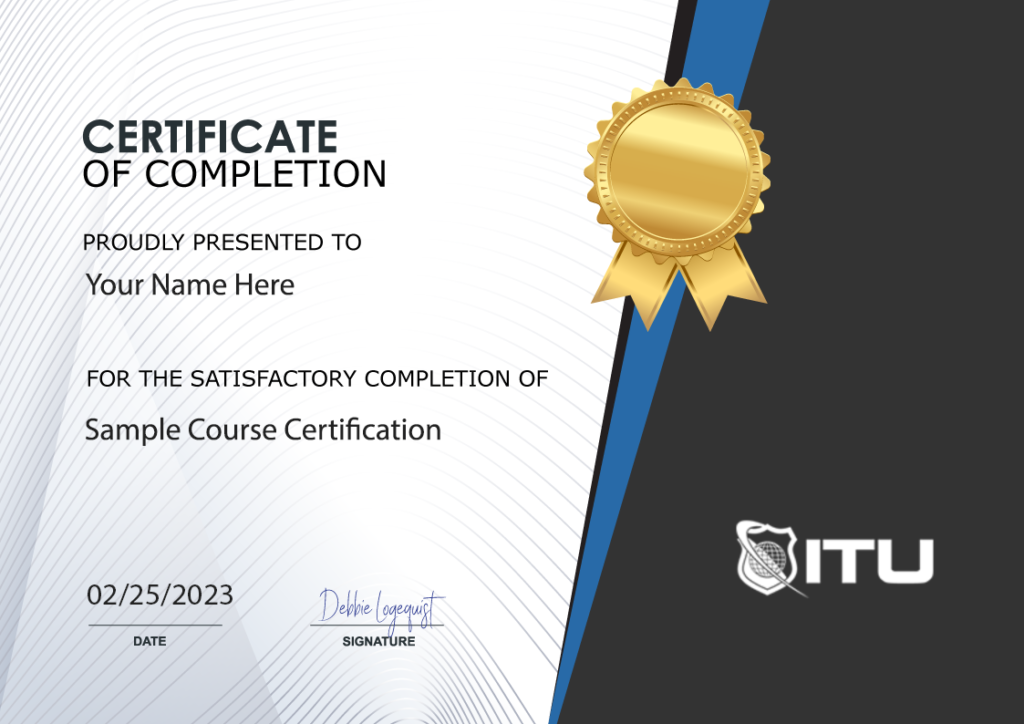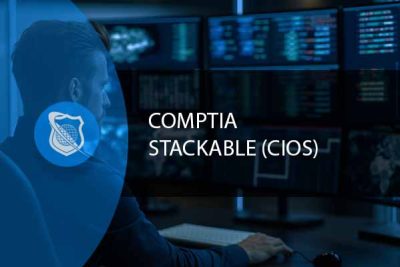
Lifetime
An ITU Online Training exclusive. The only Buy Once, Never Pay for IT training again program available. Plus, get all new and updated content for life.

With an All-Access Pass, you get access to every current and future ITU course. Access over 2,500 hours of on-demand IT Training 24/7. With over 13,000 on-demand training videos and 19,000+ practice questions, you'll have the tools to excel in the critical IT skills needed to elevate your IT Career. Our All-Access pass is available in three affordable plans.
Paris is the capital of France.
Tokyo is the capital of Japan.
Most Popular
Categories


With an All-Access Pass, you get access to every current and future ITU course. Access over 2,500 hours of on-demand IT Training 24/7. With over 13,000 on-demand training videos and 19,000+ practice questions, you'll have the tools to excel in the critical IT skills needed to elevate your IT Career. Our All-Access pass is available in three affordable plans.

ITU provides a vast array of IT-focused on-demand training designed to help you excel in both entry-level and advanced IT skills. Browse our most popular training or take a deper dive into our robust catalog of training categories.
Popular Courses All Categories
 CompTIA
Train for a globally recognized IT certification with our comprehensive CompTIA courses.
A+ | Network+ | Security+
CompTIA
Train for a globally recognized IT certification with our comprehensive CompTIA courses.
A+ | Network+ | Security+
 Cybersecurity
Master the art of combating cybersecurity threats and become a cyber hero.
Ethical Hacking (CEH) | CISSP | CISM
Cybersecurity
Master the art of combating cybersecurity threats and become a cyber hero.
Ethical Hacking (CEH) | CISSP | CISM
 Cloud Computing
An essential skill set in today's IT environments. Learn cloud computing platforms
Azure Administrator | Google Cloud | AWS Practitioner
Cloud Computing
An essential skill set in today's IT environments. Learn cloud computing platforms
Azure Administrator | Google Cloud | AWS Practitioner
 Project Management
Key to successful projects, learn the skills and methodolgy behind project management.
PMP | Risk Mgmt | Agile PM
Adobe
Business & Management
Cisco
Cloud Computing
CompTIA
Computer Support
Cybersecurity
Data Administration
Data Analysis
Development & Programming
Marketing & Social Media
Medical Coding & Billing
Microsoft
Microsoft Office
Network Administration
Networking & Software
Project Management
Web Development
Project Management
Key to successful projects, learn the skills and methodolgy behind project management.
PMP | Risk Mgmt | Agile PM
Adobe
Business & Management
Cisco
Cloud Computing
CompTIA
Computer Support
Cybersecurity
Data Administration
Data Analysis
Development & Programming
Marketing & Social Media
Medical Coding & Billing
Microsoft
Microsoft Office
Network Administration
Networking & Software
Project Management
Web Development

CompTIA CIOS is an invaluable stackable certification by CompTIA, specifically tailored for IT professionals with up to two years of experience. This remarkable path comprises learning materials that will help you pass the CompTIA A+ and Network+ exams—allowing you to make your mark as a certified professional in no time!
Included In This Course
Closed Captions
Certificate of Completion
Course Description

As an IT operations specialist, you are vital in maintaining the efficiency of a workplace and improving daily tasks. You will closely examine workflow procedures and uncover customer demands to make sure optimal results for your organization.
The CompTIA CIOS is a stackable certification by CompTIA. It is designed for IT professionals with 0 to 2 years of experience. The ITU Certification Path for the CompTIA CIOS certification consists of the learning materials to allow you to study for and pass the CompTIA A+ and CompTIA Network+ exams.
CompTIA Stackable Certifications are the perfect way to gradually increase your qualifications over time. This program guides you through attaining all of the necessary skills, while at the same time recognizing that each individual’s career path is unique.
As you progress in your career, the certifications that will best help you reach your goals should be taken into consideration. Deciding between the certification to first earn and one for progressive growth is essential to success.
Take advantage of this limited-time offer now and get a great deal on this course at an unbeatable price! View our Master CompTIA Training Series which includes this course.
Completing this path and passing the three exams means you end of with two CompTIA certifications and are a designated a CompTIA IT Operations Specialist (CIOS).
The three courses contained in this path are:
For the CompTIA A+ certification, you must pass two exams. The current exams for CompTIA A+ are:
CompTIA A+ Core 1 and Core 2 certified professionals are invaluable problem solvers and boast an extensive skill set, ranging from security to networking to virtualization. The industry standard for developing successful IT careers in today’s digital landscape is CompTIA A+. Embrace the opportunity of launching a career into this ever-evolving environment with the power of CompTIA A+ certification!
CompTIA A+ is the globally accepted credential that requires a capability test for professionals to demonstrate their skilled capacity in IT support tasks. It’s highly trusted by employers worldwide and commonly used as the go-to qualification for end point management & technical support jobs. CompTIA A+ appears more often than any other certification on tech job postings, making it essential for those seeking employment in this field.
CompTIA Network+ affirms the technical skills necessary to set up, maintain and troubleshoot vital networks that businesses can depend on for stability.
Unlike other vendor-specific networking certifications, CompTIA Network+ offers a comprehensive overview of the skills and knowledge needed to successfully support networks on any platform. The certification is specifically tailored to prepare individuals for advanced network tasks in today’s digital landscape; whereas others are so broad they fail to provide the hands-on experience sought after by employers.
Upon successfully passing the applicable exams provided by CompTIA, you will earn the CIOS certification badge. For more information on CompTIA Stackable Certifications, visit the CompTIA website. Pricing charged by CompTIA varies by exam. For details on current pricing, visit CompTIA Pricing on their website.
Understanding key terms in CompTIA IT Operations Specialist (CIOS) is vital for professionals in the IT field. This knowledge base serves as a foundational guide to the terminologies used in IT operations and services, crucial for effective communication, problem-solving, and advancement in the IT industry.
| Term | Definition |
|---|---|
| CompTIA A+ | A certification that validates understanding of the most common hardware and software technologies in business and certifies the skills necessary to support complex IT infrastructures. |
| CompTIA Network+ | A certification that certifies the essential skills needed to confidently design, configure, manage, and troubleshoot any wired and wireless networks. |
| IT Infrastructure | The set of hardware, software, networks, facilities, etc. (including all of the information technology), required to develop, test, deliver, monitor, control, or support IT services. |
| Help Desk Support | Service providing information and support to computer users, especially within a company. |
| Hardware Installation | The physical process of installing or updating hardware components in a computer system. |
| Software Installation | The process of installing and setting up a software application or system on a computer or server. |
| System Administration | The process of managing and maintaining computer systems and networks. |
| Network Configuration | The process of setting a network’s controls, flow, and operation to support the network communication of an organization. |
| Data Management | The practice of collecting, keeping, and using data securely, efficiently, and cost-effectively. |
| Cybersecurity Fundamentals | Basic principles and practices designed to protect networks, computers, programs, and data from attack, damage, or unauthorized access. |
| Cloud Computing Basics | Fundamental concepts and models related to cloud computing, including deployment and service models. |
| Virtualization | The process of creating a virtual version of something, including virtual computer hardware platforms, storage devices, and computer network resources. |
| IT Project Management | The process of planning, organizing, and delineating responsibility for the completion of an organization’s specific information technology goals. |
| Technical Support | Assistance provided to users of technology products or services. |
| Network Troubleshooting | The process of diagnosing and resolving network problems and issues. |
| IT Service Management | The activities that are performed by an organization to design, plan, deliver, operate and control information technology services offered to customers. |
| Customer Service in IT | The provision of service to customers before, during, and after a purchase in the context of IT. |
| Information Security | The practice of preventing unauthorized access, use, disclosure, disruption, modification, inspection, recording, or destruction of information. |
| Operating Systems | Software that manages computer hardware and software resources and provides common services for computer programs. |
| Business Continuity Planning | The process involved in creating a system of prevention and recovery from potential threats to a company. |
This list encompasses the foundational aspects of CompTIA CIOS, covering the key areas of IT operations, networking, cybersecurity, and technical support. These terms form the basic language and concepts for professionals in this field.
The CompTIA CIOS certification is a stackable certification from CompTIA designed for IT professionals with up to two years of experience. This certification validates your ability to manage the flow of a workplace and optimize day-to-day activities, specifically in an IT environment. The ITU training path will equip you with the knowledge to pass the CompTIA A+ and Network+ exams, which are necessary to earn the CIOS certification.
The CompTIA CIOS certification verifies a wide range of IT skills, including cloud networking, hardware configuration and troubleshooting, help desk, Linux, Mac support, mobile device support, network management, network security, operating systems, routing and switching, software-defined networking, software troubleshooting, system backup and recovery, systems administration, technical support, and virtualization.
To earn the CompTIA CIOS certification, you must pass both the CompTIA A+ and Network+ exams. The ITU training path provides the learning materials necessary to prepare for these exams.
he time required to complete the CompTIA CIOS certification can vary based on your current knowledge and experience in the IT field. However, as a rough estimate, CompTIA recommends nine to twelve months of hands-on experience and about 120 hours of study to prepare for the CompTIA A+ exam. For the CompTIA Network+ exam, it’s possible to pass with only six to eight weeks of preparation. Therefore, combining these, you should expect to dedicate a significant amount of time over several months to study for and pass both exams.
The CompTIA CIOS certification is designed for IT professionals with up to two years of experience. However, beginners who are committed to learning and gaining hands-on experience in the IT field can also benefit from the training and certification. This course would provide a strong foundation for understanding key IT concepts and practices.
Stackable certifications, like the CompTIA CIOS, allow you to build upon existing certifications to demonstrate a deeper or broader set of skills. By earning the CIOS certification, you show not only that you have the foundational knowledge from the A+ and Network+ certifications, but also that you have specialized knowledge in IT operations. This can make you more attractive to potential employers and can open up new career opportunities.

Course Outline
Anton Santucci is a seasoned IT instructor with over 20 years of experience in the field. He is currently serving as an ITU instructor for the A+ Certification Course and teaching both online and in-person computer training at Hillsborough Community College (HCC) in Florida. Anton holds an Associate's Degree in Information Systems Management and is skilled in delivering complex IT information to students in a way that is easy to understand and enjoy.
He started his career as a Microsoft Certified Trainer (MCT) and has since gained expertise in CompTIA certifications such as A+, Net+, and Security+. He also holds the CEH (Certified Ethical Hacker) certification. With five years as a Network Administrator for a career college in Florida and global experience as a corporate trainer, Anton brings a wealth of knowledge and experience to his classes.
With a belief that training can be both informative and entertaining, Anton uses humor, mnemonic devices, and questions to engage his students and ensure they retain the skills they need to succeed in the workplace. In his personal life, Anton is a passionate traveler and a fan of the Giants. He looks forward to helping you achieve your certification goals while getting to know you along the way.
Chrys Thorsen is an education and technology expert who specializes in enterprise-level IT infrastructure consulting and certified training-of-trainers. In her career, she has garnered over 50 IT Certifications including CISSP, CISA, CEHv12, PenTest+, CompTIA CNVP, Cisco CCSI/CCNP, Microsoft Cloud and on-premises technologies, VMware vSphere, and many more. She has also authored 40 published certification textbooks, and over 35 full-length IT certification video courses.
When not working in the United States, Chrys spends her time abroad capacity-building IT literacy in developing nations in Sub-Saharan Africa. Her client list has included: the US Federal Government, the Republic of Zambia Ministry of Health, Cavendish University Zambia, Accenture, JP Morgan Chase, the US Centers for Disease Control and Prevention, the Elizabeth Glaser Pediatric AIDS Foundation (EGPAF), Hughes Aircraft, Microsoft, and many more.
Chrys lives by, and is fond of repeating, her professional creed:
“The only true measure of success for any project or training is results on the ground. Everything else is just noise.” “I teach what I deploy; I deploy what I teach.”
Start this course for free with our 10-day trial of the all-access subscription providing access to over 2,600 hours of training.
$59.00

Monthly All-Access Subscription
7 Days Free - $39.00 / month
A great option at an affordable monthly price.
Annual All-Access Subscription
$229 / year
A discounted price when paying for your All Access library on an annual basis.
Lifetime All-Access Library
$379 One time payment
Exceptional Value. Pay once, never have to buy IT training again.
$699.00 $249.00
Your lifetime journey in IT never ends. Technology remains one of the fastest growing and changing career fields. With the ITU Lifetime Training program, you are always covered.
$89.00 $53.40
Take advantage of this great online cybersecurity training package that covers everything from ethical hacking to penetration testing to securing networks…and more! This online cybersecurity training series contains over 275 hours of cybersecurity on-demand videos and is available at an exceptional price.
$79.00 $47.40
Our nine course Project Managers bundle offers a comprehensive collection of training sessions to help you not just master project management, but also stay ahead in the curve and learn all its new advancements such as Agile techniques, project documentation and planning. Plus, at ITU, we provide the best route for getting your project management certification, (PMP from Project Management Institute), which is recognized world-wide as the gold standard when it comes to elevating your project management skills!

Unlock endless learning opportunities with over 2,500 hours of IT training at our lowest price ever. Plus, get all new and updated online courses for free while your subscription remains active.
Cancel at your convenience. This exceptional deal on IT training provides you access to high-quality IT education at the lowest monthly subscription rate in the market. Boost your IT skills and join our journey towards a smarter tomorrow.
Mary Beth helped me. She was wonderful.